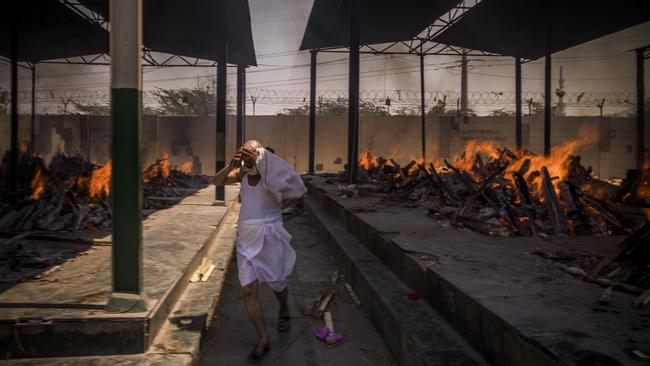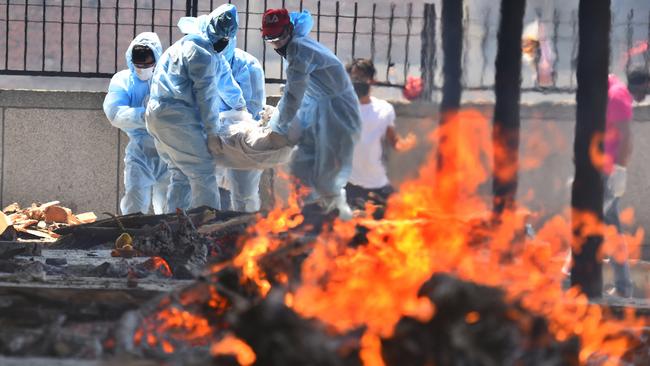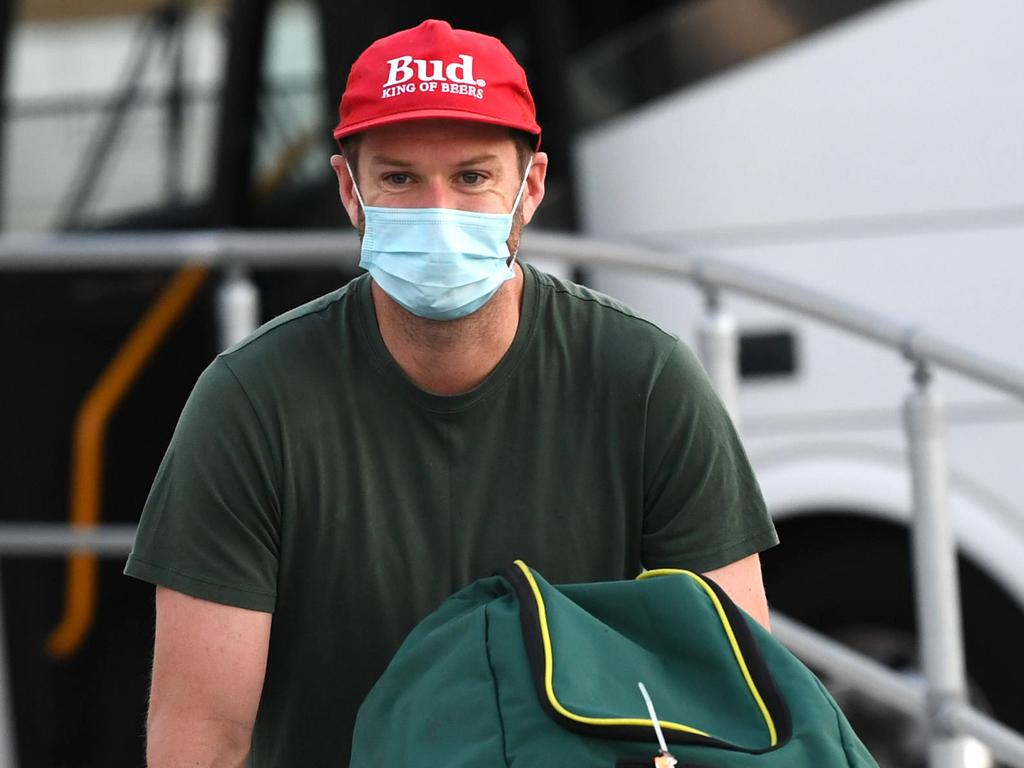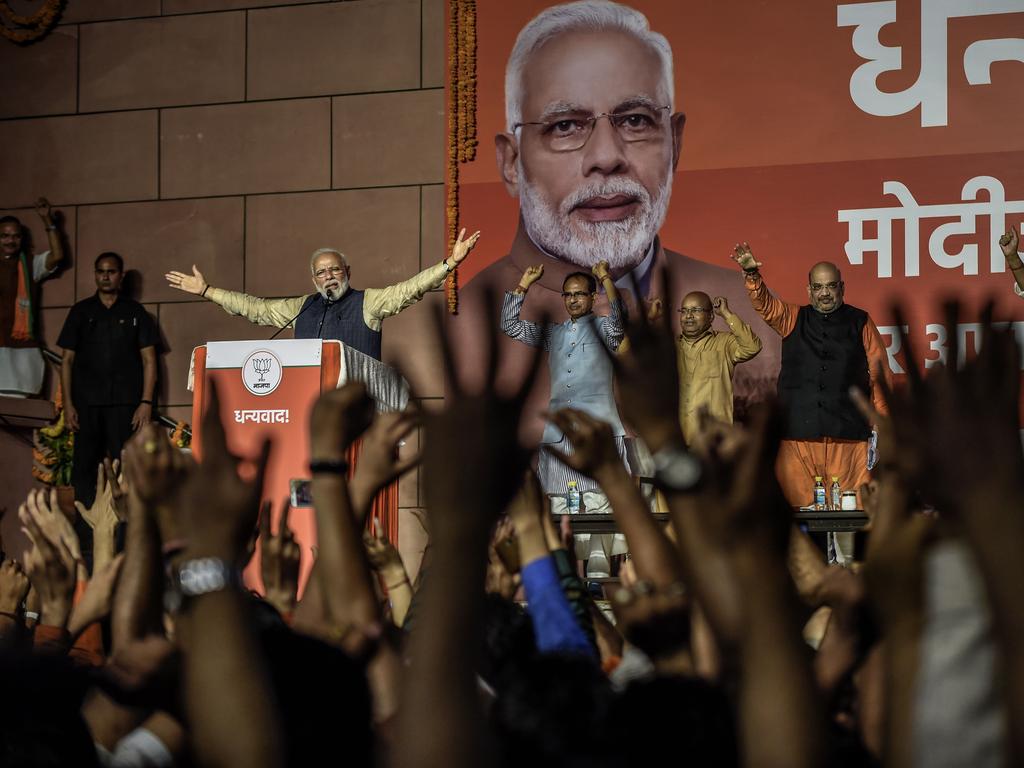Dying in the streets as hospitals overwhelmed
The world is rushing to send medical aid to India — a country that only weeks ago was shipping vaccines across the globe.

The world is rushing to send medical aid to India — a country that only weeks ago was shipping vaccines across the globe — amid a dire second COVID-19 wave that is ravaging its biggest cities and creating a potential breeding ground for even more dangerous strains that could prolong the global pandemic.
Hospitals across India are running out of beds but the situation is most acute in the capital, New Delhi, where many are critically low on medicines and oxygen, and resorting to posting desperate pleas on social media for more supplies.
Patients are dying outside hospitals as relatives beg for help.
“He was gasping for air, we removed his face mask and he was crying and saying ‘save me, please save me’,” Mohan Sharma, 17, said of his father, who died outside a Delhi hospital.
“But I could do nothing. I just watched him die.”
For a fifth consecutive day on Monday the country set a new global record for single-day infections, with 352,991 new cases confirmed in the previous 24 hours and 2812 deaths. More than 195,000 people have now died though many suspect fatalities have been significantly under-reported.
Australia, Britain, the US, EU, China, Russia, Saudi Arabia, Singapore and even arch-nemesis Pakistan have pledged aid, while many of those same countries have also closed their doors to India, hoping to keep its voracious “double mutant” B1617 strain outside their borders.
The first British shipments are due to arrive on Tuesday, some 600 ventilators and oxygen concentrators. The US has partially lifted a ban on sending raw materials abroad so that India may make more AstraZeneca vaccine, just days after ruling out such assistance because of the need to prioritise Americans. It has also pledged oxygen and protective gear.
Australia, which last week cut flights from India by 30 per cent because of a spike in COVID-positive Indian arrivals, says it too wants to help though is still working out what it can offer.
Health Minister Greg Hunt says New Delhi has asked for physical supplies of oxygen.
“We are in a position to be able to supply non-invasive ventilators … because we don’t need them at this point in time,” Mr Hunt said.

“We have reached out to the states who actually carry the suppliers of oxygen, to see whether or not there is any spare capacity that might be provided.”
Meanwhile, those who can are paying up to 50,000 rupees ($860) for a single oxygen cylinder on the black market, almost 10 times its normal price. A vial of Remdesevir, a drug used in India for treating COVID, can cost more than $500.
At a time of year when New Delhi’s notoriously bad air should be clearing, funeral pyres are burning around the clock. The city’s cremators are overwhelmed.
“I’ve never seen such a terrifying situation. I can’t believe we’re in the capital of India,” crematorium worker Jayant Malhotra told the BBC.
Indian Prime Minister Narendra Modi admitted on Sunday that, having successfully tackled the first COVID wave, “this storm has shaken the nation”.
He urged people to get vaccinated — around 1.6 per cent of its 1.3 billion population is fully immunised — and decreed that anyone over the age of 18 could now do so. But his government has also turned on those it accuses of “misinformation”, and ordered Twitter to remove dozens of posts attacking its sluggish response.
In Uttar Pradesh, Mr Modi’s Chief Minister has threatened to seize the property of those who spread “rumours” of oxygen shortages. Meanwhile, in one New Delhi hospital on Friday night, 25 patients died when their oxygen supplies ran out.
The surge has come on the back of the world’s largest religious festival, the Hindu Kumbh Mela, and a series of huge political rallies — all of which the Modi government allowed to proceed despite multiple warnings. On Monday, more than 8 million people were due to vote in West Bengal.
Yet, India’s deadly second wave is nowhere near its peak. A government-appointed expert panel has predicted cases could reach 500,000 a day in coming weeks.
“The situation has exploded in our face and the fear is that the worst is yet to come,” says Indian commentator Javed Ansari.
The government was convinced it had “got the better of the pandemic” and wasted time when it should have been building up its health and pharmaceutical infrastructure. Many Indians were also sick of social distancing and wearing masks. The winter wedding season cranked into overdrive.
Health experts now fear India’s frightening viral surge could become a pandemic accelerator.
“It is a major point of concern that more troublesome variants can emerge if left unchecked,” Rakesh Mishra, director of the Centre for Cellular and Molecular Biology in Hyderabad, said this week. “I don’t even want to imagine a more nasty variant.”
On a single day last week, Samir Saran, the president of India’s Observer Research Foundation think tank, lost two colleagues — 45-year-old South Asian scholar Joyeeta Bhattacharjee and Professor V Kesavan, one of India’s most respected East Asian scholars and an ORF visiting distinguished fellow in his 80s.
“It’s terrible and surreal,” Dr Saran told The Australian from his New Delhi home where he too has been recuperating from COVID-19.
“The first wave did not affect a certain group of people but the second wave has hit exactly all those who escaped the first. It’s just overwhelming. Every household I know has COVID.”
In his multi-generational family home, four out of 10 people now have COVID.
“This is the story of possibly every house in my street,” he says.
“My colleagues who died are just numbers. I have lots to write about this ordeal, and will, but as a human being how does it change the fact that we lost someone and could not even come together to mourn her?”








To join the conversation, please log in. Don't have an account? Register
Join the conversation, you are commenting as Logout